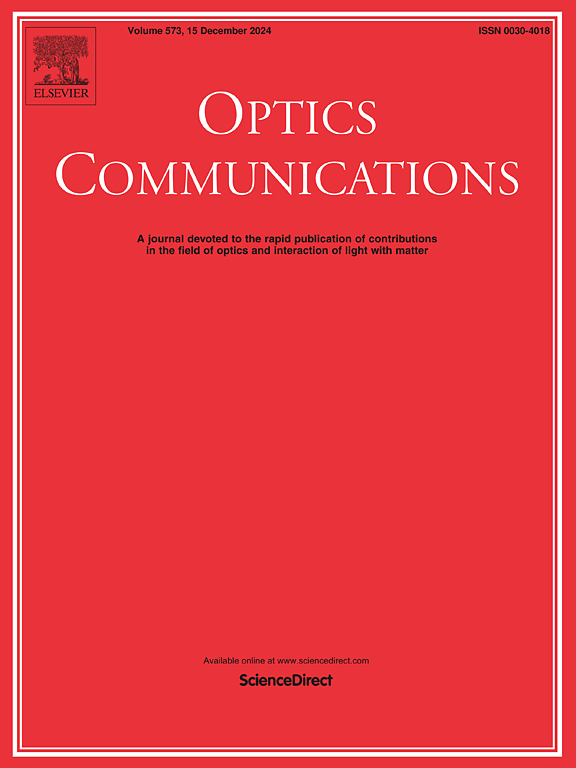Dual-broadband high-isolation circularly polarized Low-RCS shared-aperture antenna array based on mushroom-type metasurface
IF 2.2
3区 物理与天体物理
Q2 OPTICS
引用次数: 0
Abstract
In this paper, a metasurface (MS)-based dual-broadband high-isolation circularly polarized (CP) shared-aperture antenna array with in-band radar cross section (RCS) reduction is proposed. The higher-band antenna consists of a metasurface composed of four surrounded subarrays and a center driven patch. The lower-band antenna is composed of four patch antennas fed by a sequential-rotated feeding network. The mushroom-type metasurface works as additional radiators for extending the operating band in the higher-band and reducing the mutual coupling in the lower-band simultaneously. The working bands are broadened to 15.4% (5.40–6.30 GHz) and 12.9% (4.13–4.70 GHz) at the higher and the lower bands, respectively. Over 22 dB isolation is obtained by reusing the electromagnetic bandgap property of the mushroom-type metasurface. Moreover, the RCS of the antenna array is reduced due to the diffusion of the metasurface. Over 5 dB in-band RCS reduction is achieved. A sample is fabricated and measured. The experimental and simulated results are in good agreement, indicating that the proposed shared-aperture antenna array can find application in synthetic aperture radar, aircraft, and stealth platforms.
基于蘑菇型元表面的双宽带高隔离度圆极化低 RCS 共用孔径天线阵列
本文提出了一种基于元表面(MS)的双宽带高隔离度圆极化(CP)共用孔径天线阵列,可降低带内雷达截面(RCS)。高频段天线由一个由四个环绕子阵列和一个中心驱动贴片组成的元表面构成。低频段天线由四个贴片天线组成,由一个顺序旋转的馈电网络馈电。蘑菇型元表面作为附加辐射器,可同时扩展高频段的工作频带和降低低频段的相互耦合。高频段和低频段的工作频带分别拓宽了 15.4% (5.40-6.30 GHz)和 12.9% (4.13-4.70 GHz)。利用蘑菇型元表面的电磁带隙特性,可获得超过 22 dB 的隔离度。此外,由于元表面的扩散作用,天线阵列的 RCS 也有所降低。带内 RCS 降低了 5 分贝以上。对样品进行了制作和测量。实验结果和模拟结果非常吻合,表明所提出的共用孔径天线阵列可应用于合成孔径雷达、飞机和隐形平台。
本文章由计算机程序翻译,如有差异,请以英文原文为准。
求助全文
约1分钟内获得全文
求助全文
来源期刊

Optics Communications
物理-光学
CiteScore
5.10
自引率
8.30%
发文量
681
审稿时长
38 days
期刊介绍:
Optics Communications invites original and timely contributions containing new results in various fields of optics and photonics. The journal considers theoretical and experimental research in areas ranging from the fundamental properties of light to technological applications. Topics covered include classical and quantum optics, optical physics and light-matter interactions, lasers, imaging, guided-wave optics and optical information processing. Manuscripts should offer clear evidence of novelty and significance. Papers concentrating on mathematical and computational issues, with limited connection to optics, are not suitable for publication in the Journal. Similarly, small technical advances, or papers concerned only with engineering applications or issues of materials science fall outside the journal scope.
 求助内容:
求助内容: 应助结果提醒方式:
应助结果提醒方式:


